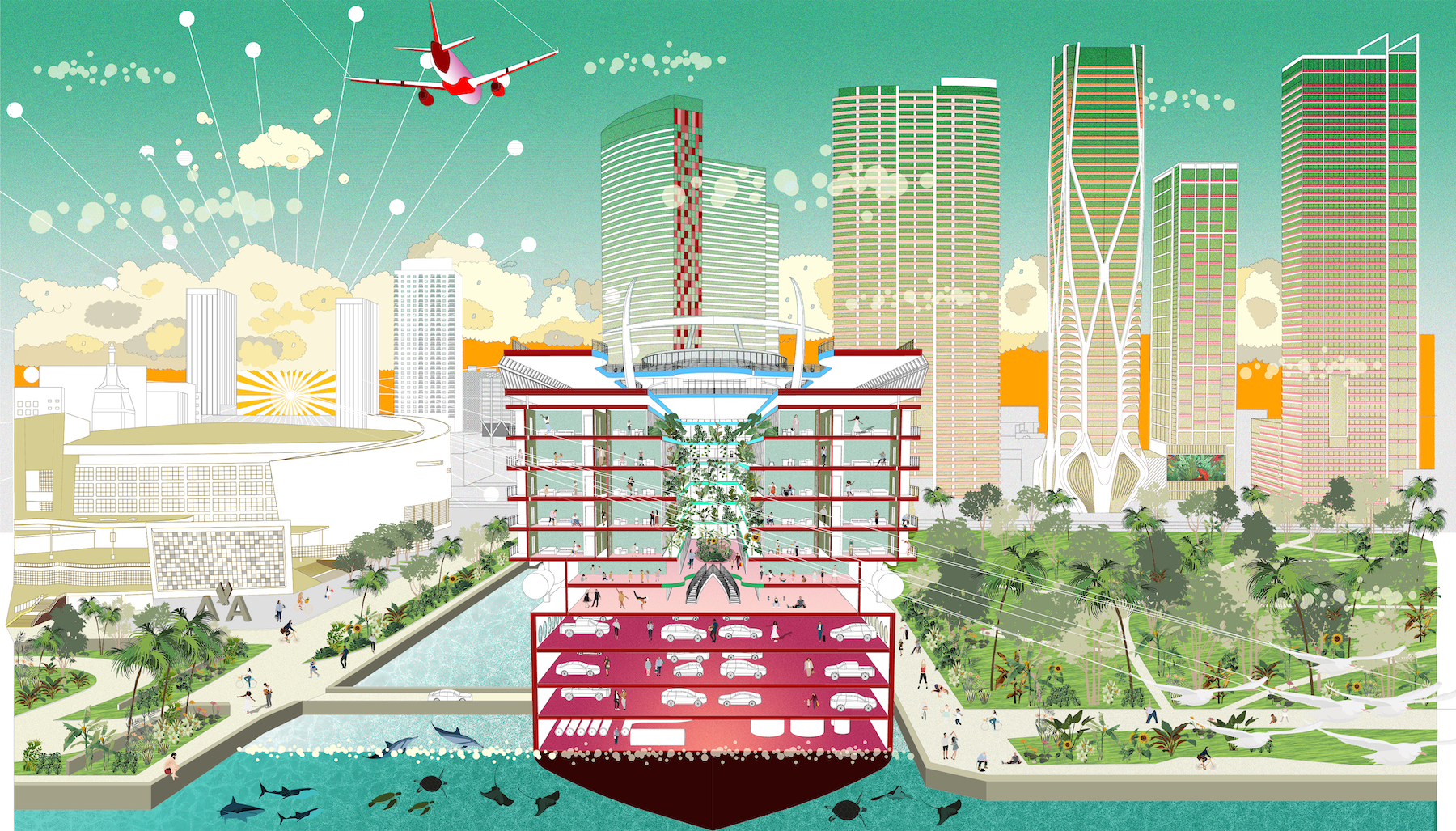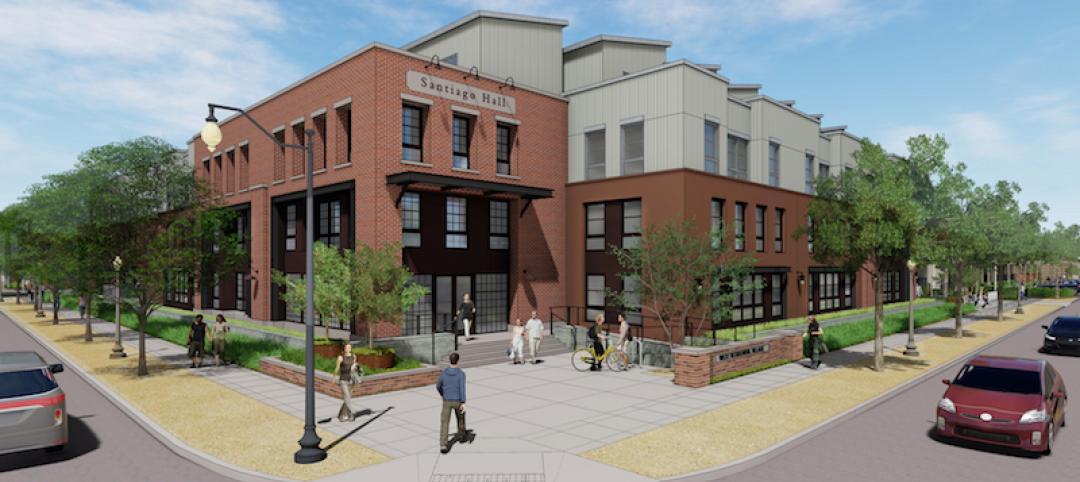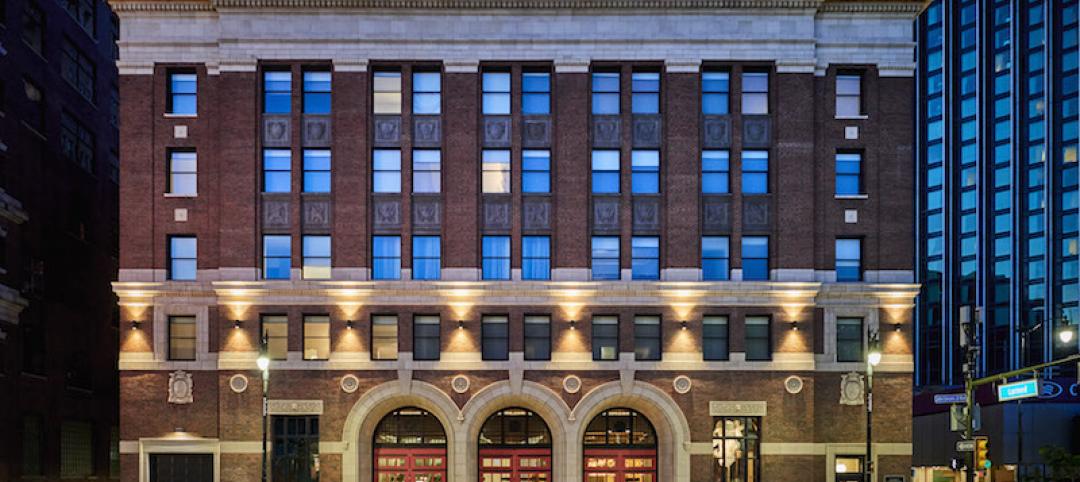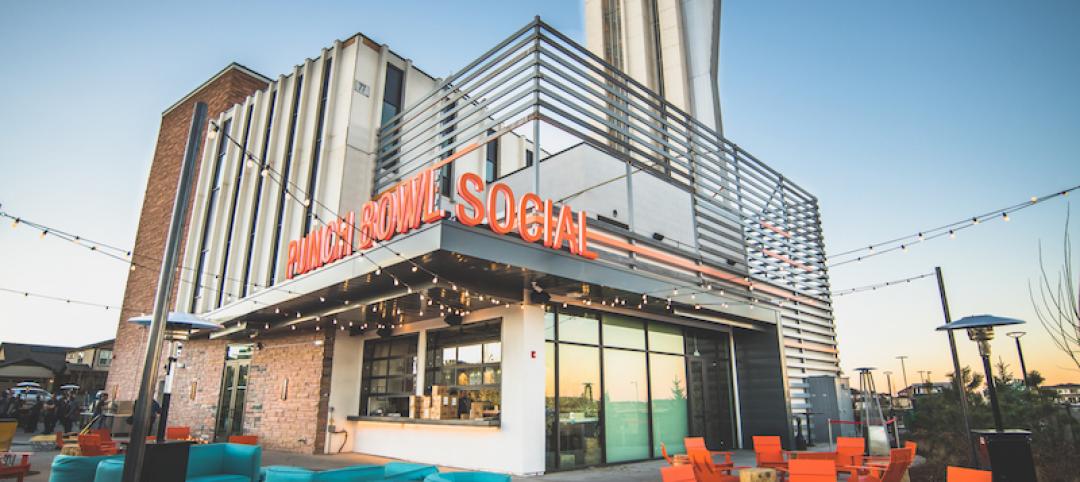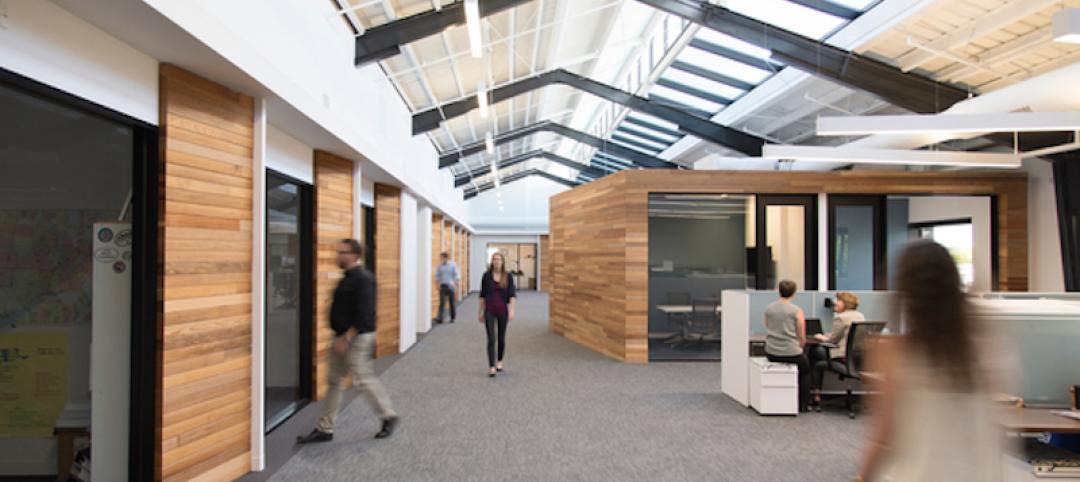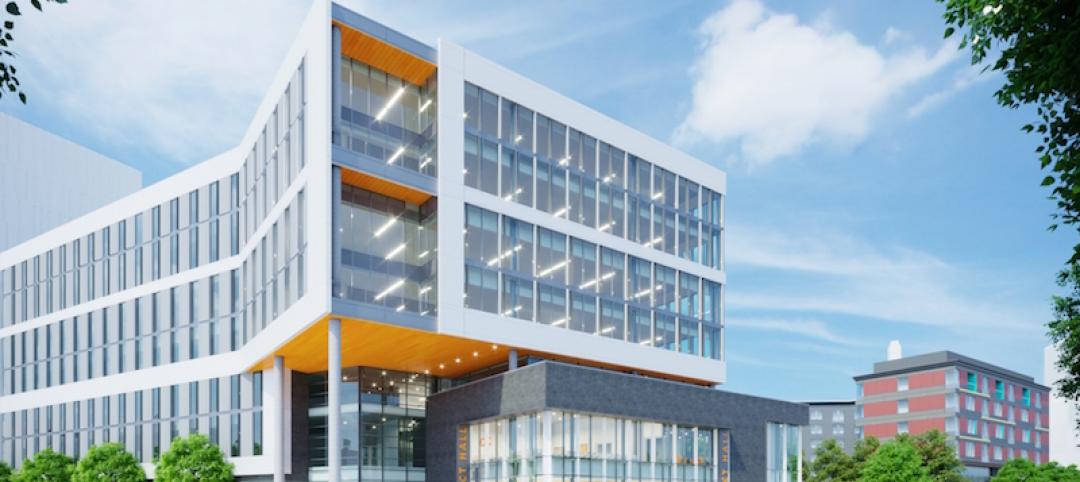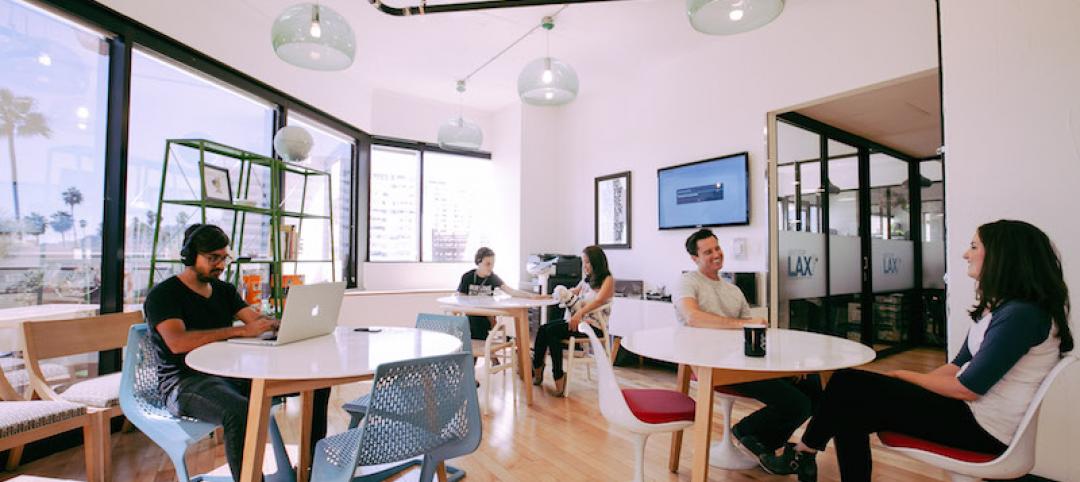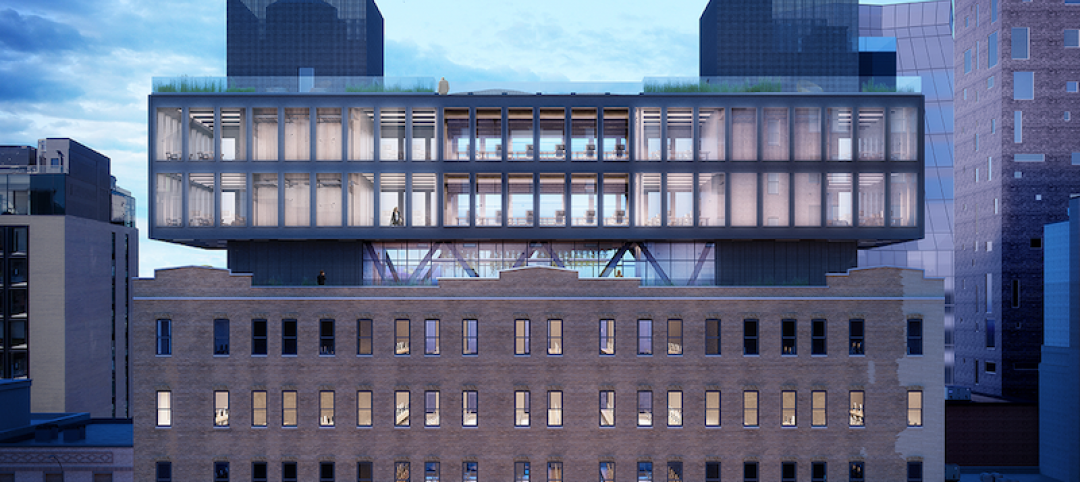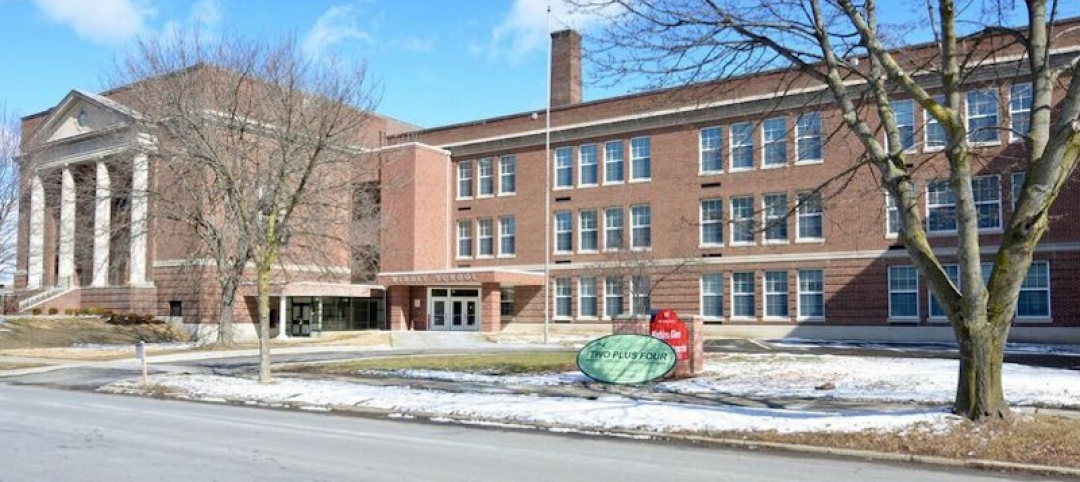In 2020, a record number of cruise ships were decommissioned, sold, or sent to a scrapyard. Due to the sudden freeze in the cruise industry, major cruise corporations reduced their fleet numbers. On top of that, the International Marine Organization changed its emission regulations and required all vessels to reduce their sulfur oxide emissions by 77 percent (IMO). This regulation mandated engines to undergo costly renovations of millions of dollars. With lower passenger capacities, this upgrade was not feasible for many ships.
The rapid increase in cruise ship decommissioning during the last 18 months has created a unique opportunity to innovate and adapt these large ships. By repurposing decommissioned cruise ships for housing in existing port areas, cruise ships could offer an alternative mode of coastal living. This housing alternative can be brought to life by utilizing the overwhelming number of decommissioned ships as a primary housing structure, using semi-permanent docking in existing port areas, and in turn, potentially creating affordable housing.
LOOKING INTO THE FUTURE
There are several ways we can explore docked residential cruise ships. As an example, ships can share ports or periodically move locations instead of having one designated port for the vessel. This idea builds on the increase of remote work that boomed in 2020 due to the COVID-19 pandemic and could attract residents who are not tied to a particular location. As many companies are transitioning to fully remote options for work, this way of living could be attractive to the digital nomad. Another possibility would be allowing residents to sign short-term leases at monthly intervals to reduce the commitment required for those traveling, migratory, or hesitant about a long-term contractual obligation.
While the idea of recycling and repurposing cruise ships may seem outlandish, these ships have the opportunity to bring more affordable housing to the masses while also keeping the ship itself alive. To test this idea, CallisonRTKL conducted an online survey of 362 adults in Miami-Dade County, (Qualtrics) to investigate perceptions from potential residents of this new living concept. The findings strongly supported the proof-of-concept, with respondents expressing (88 percent "yes" or "maybe") interest in living on a repurposed cruise ship. Those expressing the greatest interest are 41-50 years of age, earning at least $100,000 per year, who are single or single with children, and willing to pay $849 (mean) and $4,000 (max) per month.

A NEW ERA FOR DECOMMISSIONED CRUISE SHIPS
There are many considerations architects, designers, and city planners will need to take into account when creating these spaces. A permanently docked residential cruise ship requires infrastructure for fueling, waste management, power, sewer, and other provisions. Large vessel docking and crucial concrete piles necessary for docking add additional costs to the concept. A hurricane evacuation plan is also required for a residential ship and would need to be communicated to future residents before occupation. Potential hurricane damage must be accounted for when planning robust operational systems and investments.
Smaller cruise ships are more suitable for permanent docking as they require less space and dredging. Smaller ships function at a scale similar to a high-rise apartment complex, are less intrusive to the urban planning of a city, and are less likely to block views from land to sea. In terms of location, a docked residential cruise ship is most conveniently located in a body of water that is both deep and passive from wave activity, such as up-river. For example, the Hudson River, where ships are permanently moored, could serve as a great body of water for a docked residential cruise ship.
NEXT STEPS
The above statistics highlight that there is a market for transforming cruise ships into affordable housing. However, it is important to understand the cost implications behind cruise ship repurposing, including costs associated with building new pier infrastructures to be used for decommissioned cruise ships. Additionally, cost estimates must be made for city and federal planning approvals, engineering and design, and interior renovations. Beyond cost, site investigations need to take place to analyze the environmental impacts and reporting of these decommissioned cruise ships. While still in the early stages, it is an exciting idea for decommissioned cruise ships to transform into naturally occurring affordable housing, and the potential for these decommissioned ships is promising.
Related Stories
Adaptive Reuse | Jan 4, 2018
Student housing development on Chapman University campus includes adaptive reuse of 1918 packing house
The Packing House was originally built for the Santiago Orange Growers Association.
Adaptive Reuse | Dec 11, 2017
Detroit's economic improvement a boon to its hotel sector
Detroit Foundation, a stylish boutique hotel, is the Motor City’s newest hospitality venue.
Adaptive Reuse | Nov 29, 2017
‘Eat-ertainment’ establishment grants abandoned air traffic control building a second life
The concept’s design reflects the golden age of flight.
Adaptive Reuse | Nov 10, 2017
Austin’s first indoor shopping mall becomes Austin Community College’s new digital media center
Renovation of the defunct mall represents Phase 2 of ACC’s $100 million adaptive reuse project.
Adaptive Reuse | Oct 23, 2017
A tableware storage space is reset to accommodate an investment firm’s headquarters in Raleigh, N.C.
This adaptive reuse establishes more direct visual and physical connections to a growing city.
Adaptive Reuse | Oct 5, 2017
Wexford’s latest innovation center breaks ground in Providence
The campus is expected to include an Aloft hotel.
Office Buildings | Jun 13, 2017
WeWork takes on a construction management app provider
Fieldlens helps turn jobsites into social networks.
Office Buildings | Mar 27, 2017
New York warehouse to become an office mixing industrial and modern aesthetics
The building is located in West Chelsea between the High Line and West Street.
Adaptive Reuse | Nov 9, 2016
Middle school transformed into affordable housing for seniors
The project received $3.8 million in public financing in exchange for constructing units for residents earning less than 60 percent of the area’s median income.
Adaptive Reuse | Nov 7, 2016
From fuel to food: adaptive reuse converts a closed gas station in Princeton, N.J., to a Nomad pizza
The original building dates back to the Modernist 1930s.


